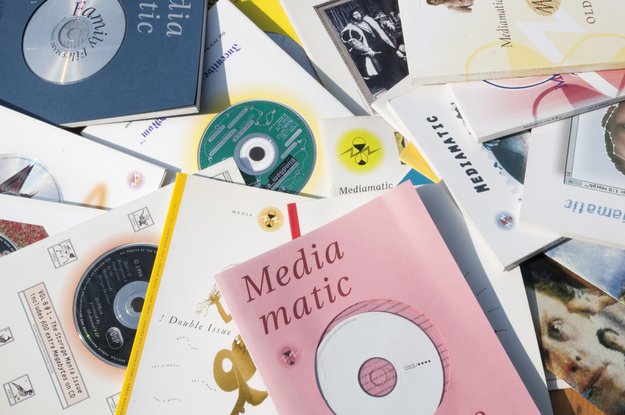CD-ROM art? What is that?
CD-ROM art emerged in the late 80s- early 90s with the introduction of CD-ROMs (Compact Disc Read-Only Memory) as a new way to store and distribute information. Artists saw the CD-ROM as a new artistic medium that allowed for interactivity and multimedia exploration, so they started experimenting with its boundaries by creating immersive worlds for the user.
Mediamatic and CD-ROM art
Mediamatic has a long history with CD-ROM art. During the 1990s and early 2000s, Mediamatic distributed and published twelve CD-ROMs made by prominent artists such as Gerald Van Der Kaap, JODI, and Mari Soppela through the Mediamatic Magazine and Mediamatic Off-Line. Since then, Mediamatic has experimented with ways of preserving these innovative CD-ROMs. Now 30 years after their creation and as part of Mediamatic’s 40 year anniversary, we are bringing these artworks back to life and exploring ways to present them again to the public. In the process of this, we have been researching CD-ROM art with a newfound appreciation of this, almost forgotten, piece of art.
Researching CD-ROMS
How does one go about researching media art from 30 years ago? With the technological advancements of recent years, CD-ROM technology has become obsolete and our current, modern computers can no longer support it. The process of researching CD-ROM art is not one that goes without challenges; throughout our research we encountered difficulties and technical problems.
The challenges of 20th century technology
We started by researching the technical requirements of our CD-ROMs. Most of them require a Macintosh computer with OS 7/8/9/10 system, so we went on the lookout for old G4 Mac computers that can play the CD-ROMs. After we collected them we started exploring with them. As expected with old technology, this did not go without difficulties. Even though our new computers could play the CD-ROMs, their processor was too quick for several CD-ROMs in our collection, which resulted in certain elements running too fast than their original speed. We also encountered the opposite problem, of elements or the computer getting stuck due to our hurry to explore everything the CD-ROM has to offer a bit faster than it can handle.
We also started looking into emulators to increase the accessibility of our CD-ROMs so they are no longer bound by 1990s technology. Emulators allow your computer system to behave like another computer system. In our case we want emulators that enable our computers to run on MacOS7, 8, 9 or 10. This proved challenging, since the emulator technology we tried was a bit too fast for our CD-ROMs. Our latest attempt was with web-based emulators but sadly the file of the CD-ROM was not recognised by the emulator. Working with emulation technology is something we are still very keen to explore and this is definitely not the last of our attempts.
Discovering their story
Mediamatic’s collection of CD-ROM art covers a wide variety of topics, ranging from politically-engaged art to home movies. Bringing back these artworks to the 21st century has led us to not only research the technical aspects of CD-ROM art, but also find out what the world was like at the time that these CD-ROMs were created.
We have had conversations with the artists that created the CD-ROMs, flipped through the issues of Mediamatic Magazine and Mediamatic Off-Line and read articles and newspaper clippings from the time. And they all agreed on one thing…That CD-ROMs at the time were an exciting new medium that presented a new artistic world ready to be explored without limitations, with an almost naïve optimism about all the possibilities unfolding for the future.
Writing it all down
A crucial step of our research process is also the documentation of our CD-ROMs collection. In order to have a clear overview and archive of our collection, we documented all our CD-ROMs with details on their creators and contributors, their hardware and technical requirements as well as the year of their production and publication.
On our website, you can also find all of Mediamatic Magazine and Mediamatic Off-Line issues digitized.
CD-ROM art was one of the first steps of media and digital art. This pioneering artistic medium, even though short lived due to rapid technological advancements, allowed artists the creative freedom to experiment and familiarize themselves with the possibilities technology has to offer to the art world. Our goal is to stop these CD-ROMs from drifting into oblivion and present them to the public again under new lenses. We bring back our CD-ROM collection to the 21st century not only as a nostalgic piece from the past but also to dive back into this world and discover what it can teach us today and for the future.

